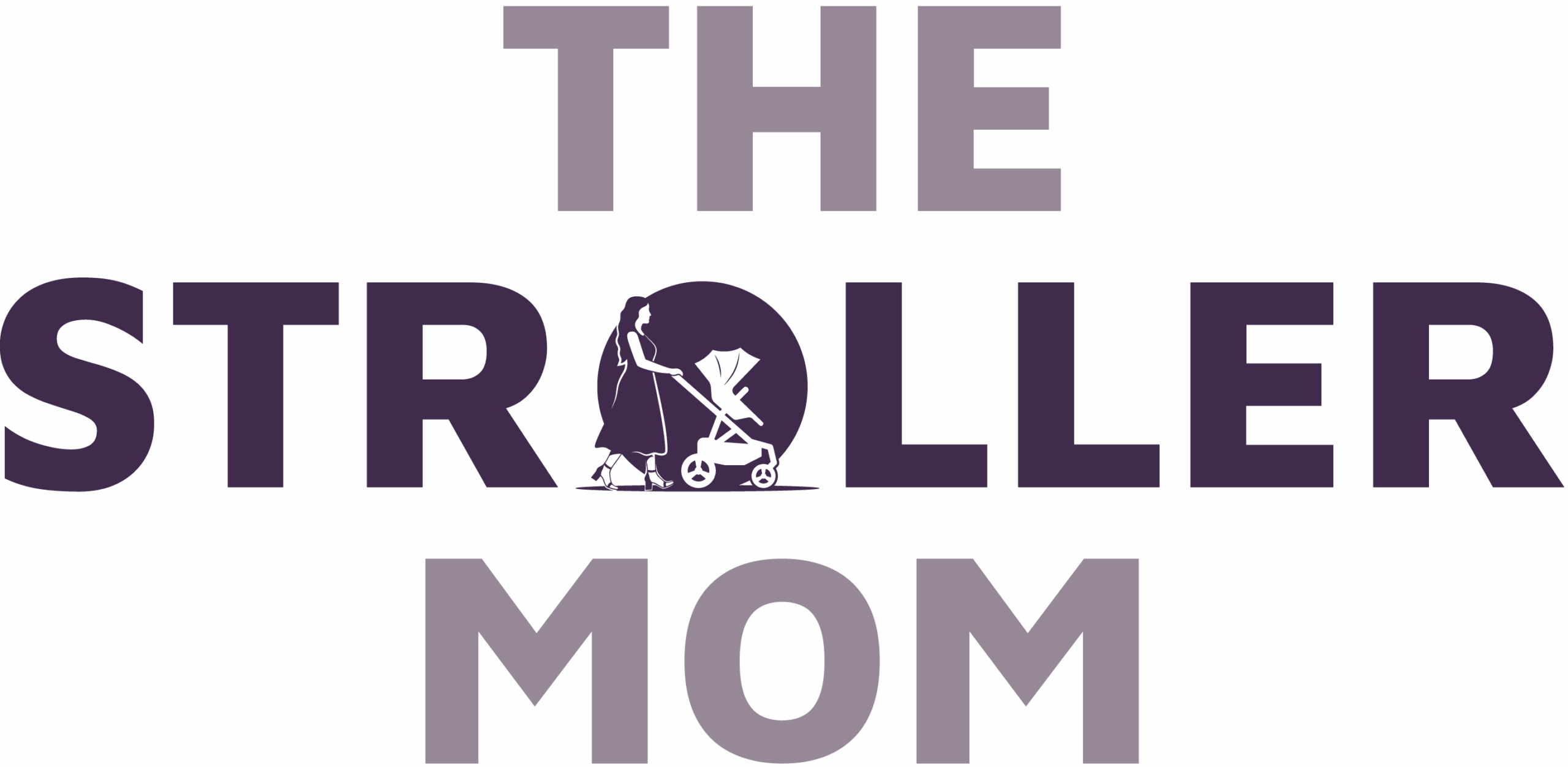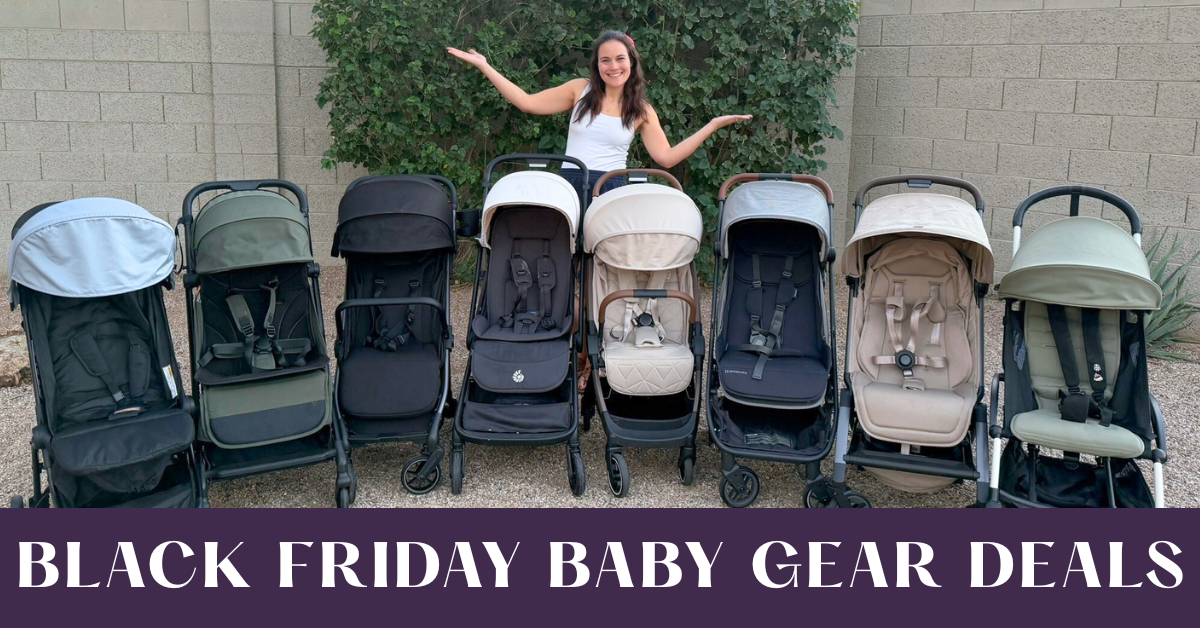If you have a toddler or multiple toddlers running around, you’re undoubtedly looking for ways to burn their energy. I’ve found that wobble boards for toddlers are a great way to get out their energy. On top of that, wobble boards help with developing your toddler’s sense of balance.
The development of balance and gross motor skills plays a fundamental role in your child’s overall growth and well-being. These skills not only contribute to physical strength and agility, but also can help with cognitive development, self-confidence, and social interactions.
Don’t have time to read the whole blog? Click here to jump to the best overall wobble board.
One of the most effective and fun ways to enhance these essential skills is through the use of a toddler balance board. These specially designed toys provide a way for toddlers to explore and improve their physical abilities. Balance boards (also called wobble boards) are flat surfaces with a curved bottom, designed to wobble. As children stand and play on these boards, they are continuously challenged to maintain their balance. This helps strengthen their core muscles, develop coordination, and enhance spatial awareness.
More than that, wobble boards foster imaginative play and encourage creativity. My kids like to use them as a bridge, pair them with their nugget play couches, and even use them as a crib for their babies.
Table of Contents
What is a Wobble Board?
A wobble board (sometimes called a balancing board) is a curved piece of wood designed to help your child develop balance and coordination skills (and burn some of their energy!). Most wobble boards are made of wood, but some are made of plastic. Their design challenges your child to maintain their balance while “wobbling” from side to side. A wobble board is considered an open-ended toy—meaning they help your child’s imagination develop.
6 Benefits of Balance Boards for Toddlers
- Helps develop core strength, improves posture, enhances coordination and body awareness, and promotes overall gross motor skills development.
- Help balance and sense of where you are in space (vestibular system) get better, and also improve your ability to know how your body is moving and where it is (proprioception).
- Balance and wobble boards encourage active and open-ended play, which in turn contributes to overall fitness and healthy growth.
- Beyond physical development, these boards also foster cognitive development. The act of balancing requires concentration and problem-solving, which helps develop these cognitive skills in toddlers.
- The versatile nature of these boards encourages pretend play, as they can be used in multiple ways – as a slide, a bridge, a rocking chair, or even a doll’s bed – fostering creativity and imaginative play.
- Using these boards can also improve self-confidence in toddlers, as they gain mastery over their movements and balance, making them a great addition to any home.
What to Look for in a Wobble Board
Safety Features
- Rounded Edges: Boards with rounded edges are safer for toddlers as they can prevent injuries from sharp corners.
- Stability: Look for boards that offer enough core stability to prevent tipping over, while still providing a challenge for balancing.
Durability
- Materials: The board should be made of sturdy materials like high-quality wood or strong plastic to withstand active play.
- Weight Capacity: Check the weight limits (and minimum age) of the board to ensure it can safely support your toddler.
Size
- Suitable for Toddlers: The board should be an appropriate size for toddlers, not too high off the ground, and with a surface area that provides enough space for them to stand and move comfortably.
Fun Factor
- Attractive Design: Bright colors, cute patterns, or favorite characters can make the board more appealing to children.
- Interactive Features: Some boards may come with additional features like maze designs, which can add to the fun factor.
Additional Features
- Versatility: Some boards can be used for more than just balance training – they can become a bridge for toys, a pretend surfboard, a slide, and more.
- Sustainability: If sustainability is important to you, look for boards made from eco-friendly or recycled materials.
- Comfort: Some balance boards come with a padded or softer surface for added comfort during play.
Always remember to consider the specific needs and preferences of your child when choosing a balance or wobble board. Also, adult supervision should be a minimum for these toys, especially when your kids are young.
Top 5 Balance Boards for Toddlers
In this section, I cover things from wooden boards to plastic boards to Montessori balance boards. I am confident that you will find a great choice for your family! Also… they make a great Christmas gift!
Please note, the links in this blog are affiliate links, meaning when you make a purchase, you are supporting The Stroller Mom.
Best Overall Wobble Board for Toddlers: Gentle Monster Wooden Wobbler
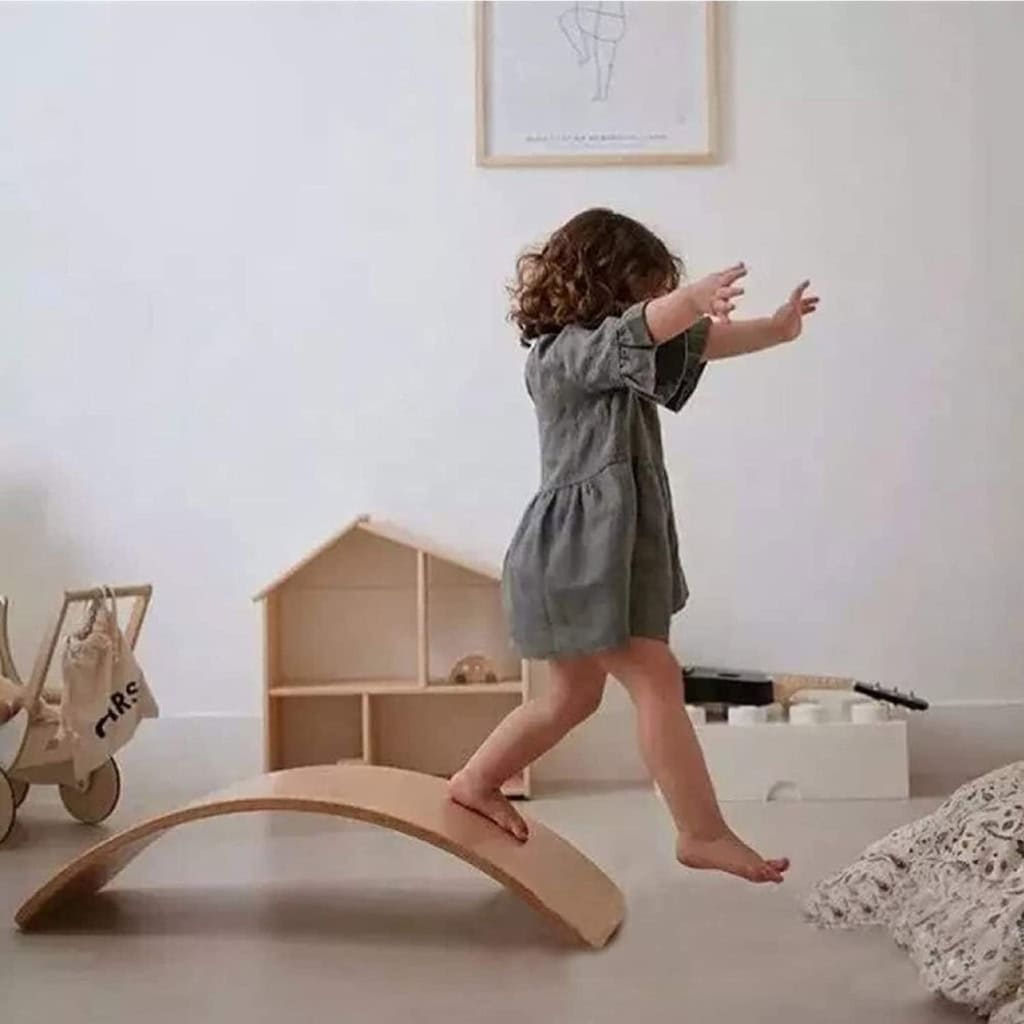
- Price: $69 on Amazon
- Material: Natural wood
- Recommended Ages: 18 months+
- Maximum Weight: 480 pounds
- Size: 32″ L x 11.25″ W x 7.5″ H
- Product Weight: 4.49 pounds
- Learning Curve: Easy to Medium
- Safety Features:
- Rounded corners
- Smooth wood
- High weight limit
- The Lowdown:
- Made with the highest quality materials (no MDF)
- This board is perfect for ages 2-5, but your older kids may not find it challenging enough
- Versatile toy: can be used as a bridge, seat, slide, with a Nugget play couch, race track, outdoor use, etc.
- A few people have complained of chipping, but it has a two-year warranty—one of the main reasons this is the best wobble board
- Because of the high weight limit, this is something the whole family can enjoy. It can support the weight of an adult.
- It doesn’t come with a nonslip surface, so make sure you’re using it on carpet or another nonslip surface
Runner Up for Best Overall Wobble Board: WOOD CITY Kids
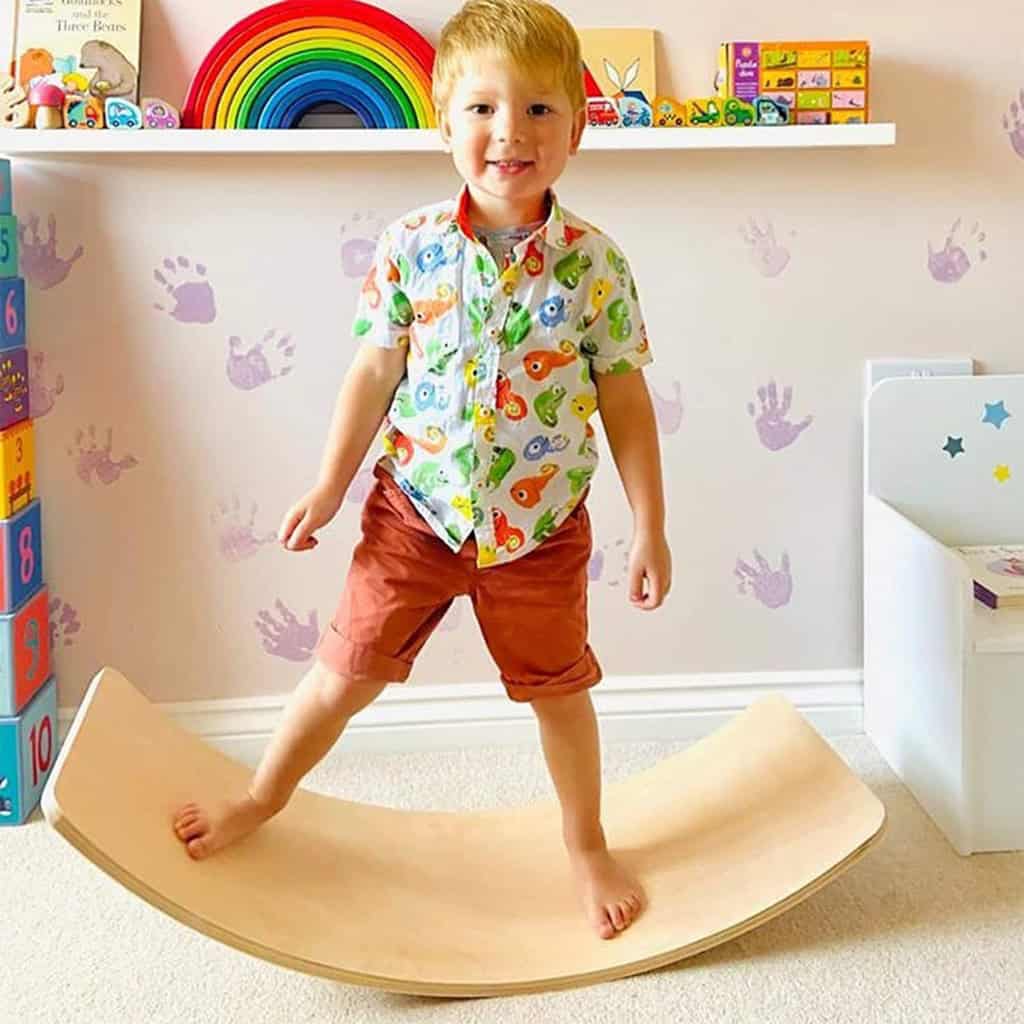
- Price: $69 on Amazon
- Material: Wood
- Recommended Ages: 18 months+
- Maximum Weight: 480 pounds
- Size: 31″ L x 11.8″ W x 6″ H
- Product Weight: Around 3 pounds
- Learning Curve: Easy to Medium
- Safety Features:
- Rounded corners
- Smooth wood
- High weight limit
- The Lowdown:
- A few people have complained of chipping, and unlike the Gentle Monster board, this one does not come with a two-year warranty.
- Great quality materials!
- This board is perfect for ages 2-5, but your older kids may not find it challenging enough
- Versatile: can be used as a bridge, seat, slide, with a Nugget play couch, etc.
- Because of the high weight limit, this is something the whole family can enjoy
- It doesn’t come with a nonslip surface, so make sure you’re using it on carpet or another nonslip surface
Best Game Wobble Board: PUREFI Maze Balance Board
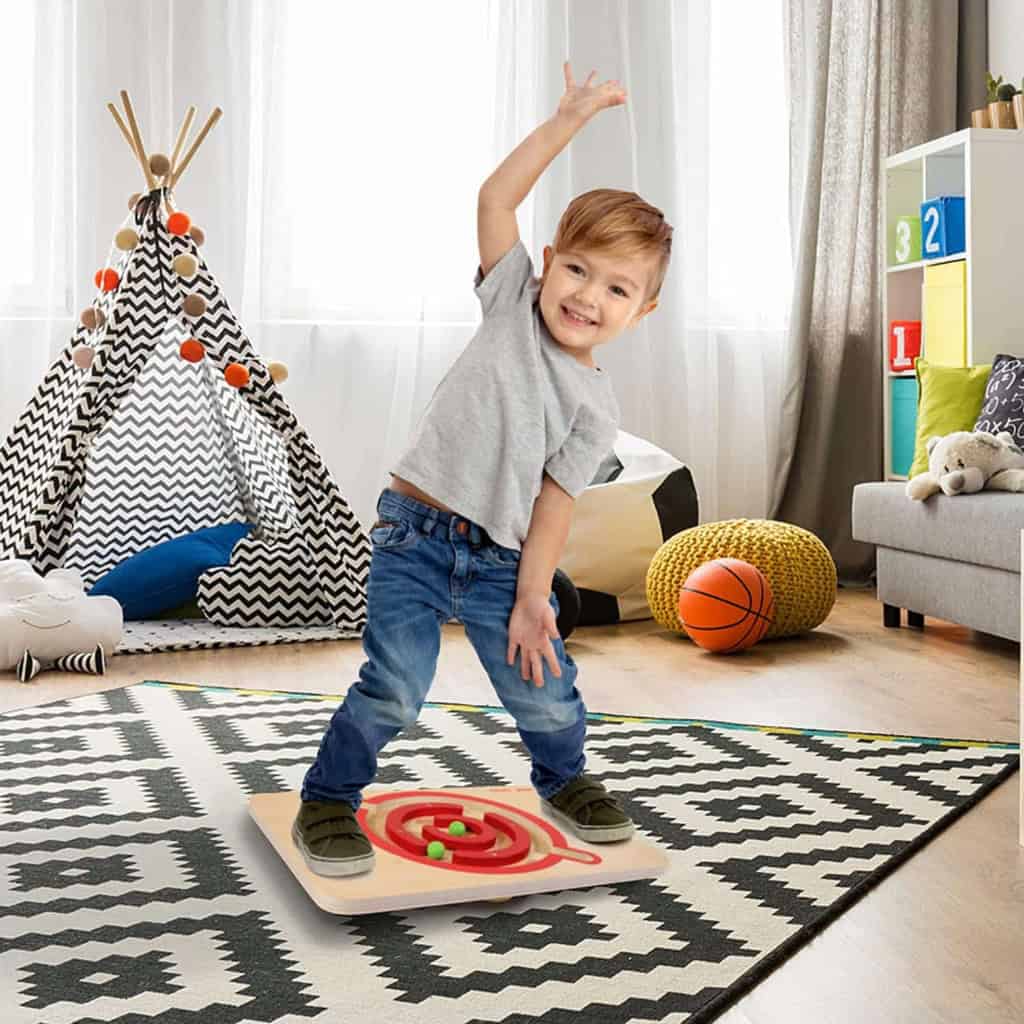
- Price: $43 on Amazon
- Material: Wood
- Recommended Ages: 3+
- Maximum Weight: 350 pounds
- Size: 19.49″ L x 12.95″ W x 3.5″ H
- Product Weight: Around 3 pounds
- Learning Curve: Depends on the age – the younger your child is, the higher the learning curve. Easy for older children.
- Safety Features:
- Rounded corners
- Smooth wood
- Lightweight
- High weight limit
- Skid resistance protection
- The Lowdown:
- Most kids don’t start to really understand mazes until 3 or 4
- Gamification keeps kids entertained
- Can support most adults
- Many different ways to play, meaning it’ll grow with your child and last a long time
- No cover, so it is easy to lose the balls
- It is made of plywood, so longevity may be an issue from a construction standpoint
Best Small Wobble Board: DaWikity Kids Balance Board
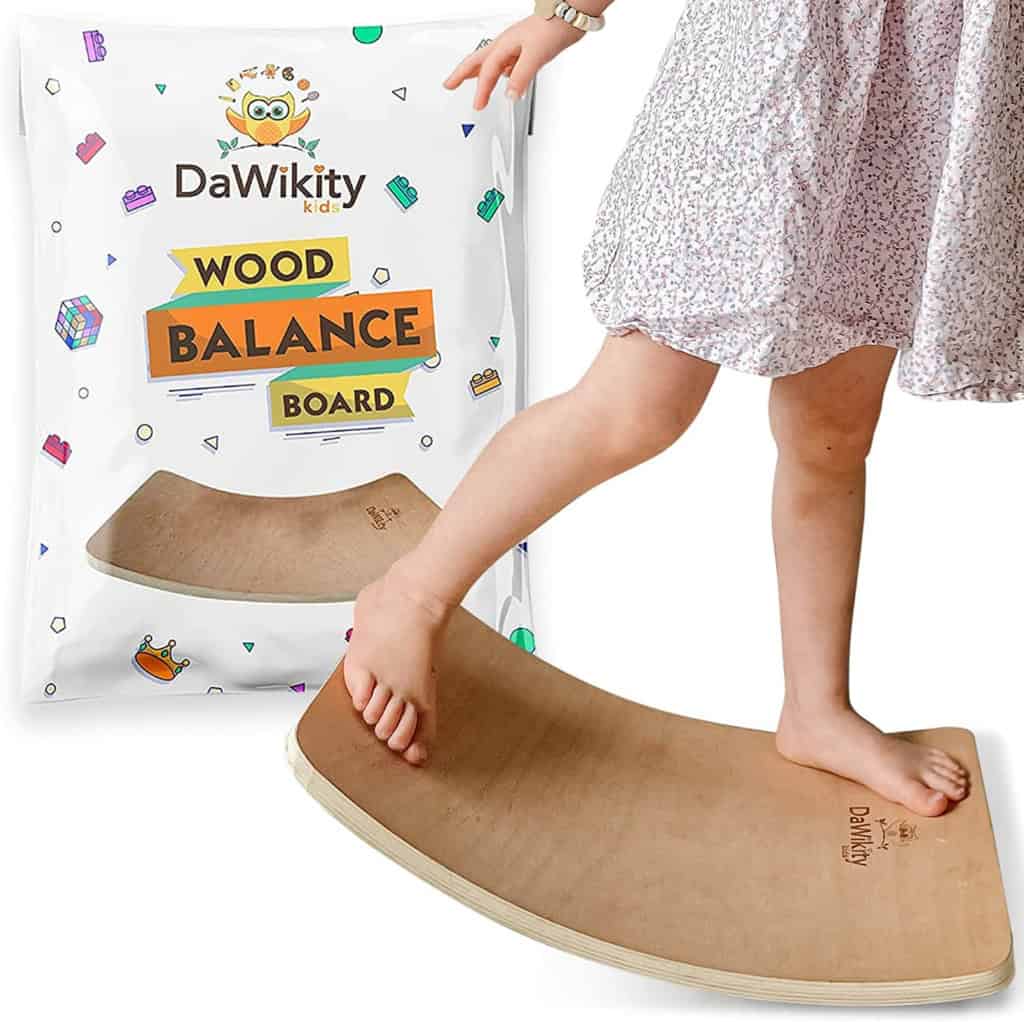
- Price: $29 on Amazon
- Material: Wood
- Recommended Ages: 2+
- Maximum Weight: 480 pounds
- Size: 17″ L x 12″ W x 3″ H
- Product Weight: Around 2.5 pounds
- Learning Curve: Easy
- Safety Features:
- Shorter boards are generally safer for younger kids
- Rounded corners
- Smooth wood
- The Lowdown:
- Excellent price. This is a great way to gauge interest without breaking the bank.
- High-quality board, especially for the price
- Lifetime warranty!
- Easy to store thanks to the small footprint
- Minimalistic design
- Best entry-level board on the market, but your kid will outgrow it rather quickly
- Some complaints about the construction quality. However, the manufacturer has a lifetime warranty (as mentioned earlier)
Best Plastic Wobble Board: PLATPORTS BPA-Free
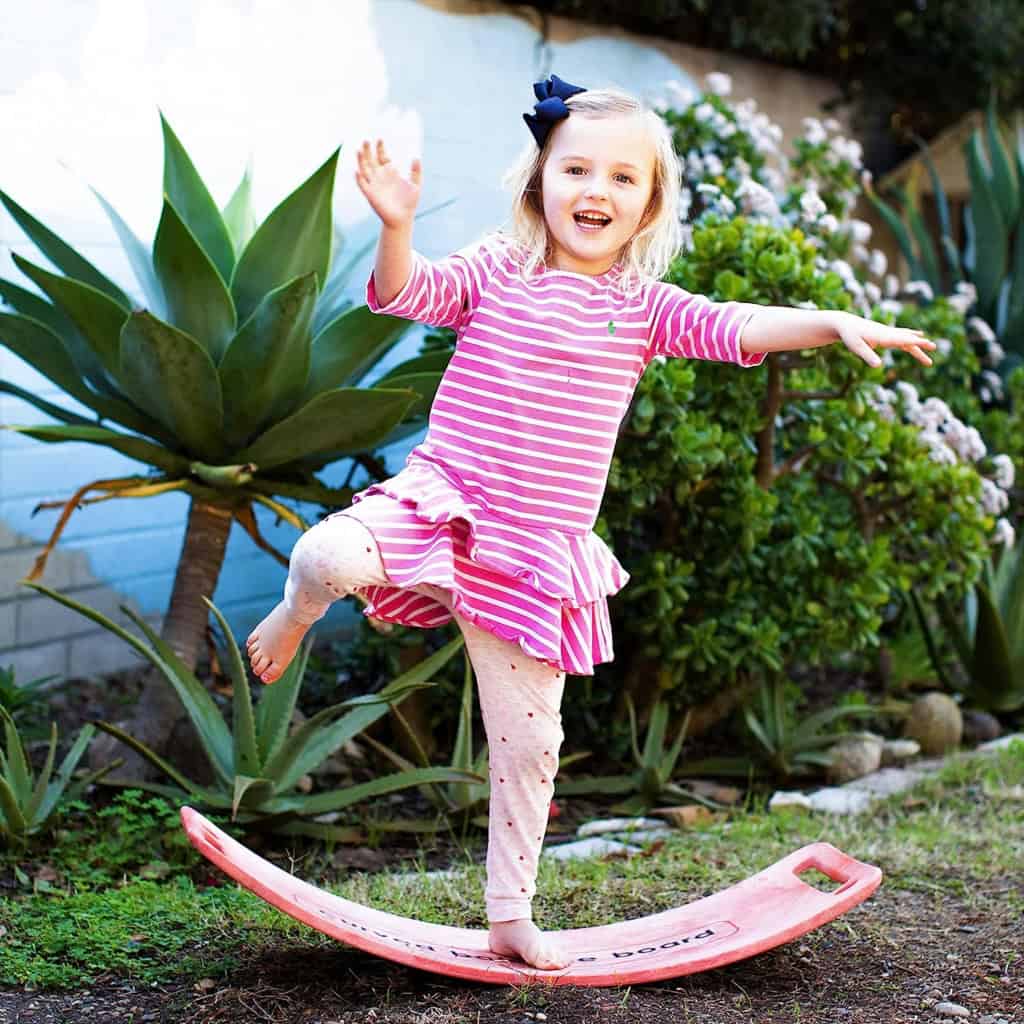
- Price: $49.99 on Amazon
- Material: Plastic
- Recommended Ages: 2+
- Maximum Weight: 187 pounds
- Size: 32″ L x 12″ W x 1″ H
- Product Weight: Around 5.5 pounds
- Learning Curve: Medium
- Safety Features:
- Made from BPA-free plastic
- Doesn’t chip or splinter like wood
- The Lowdown:
- Versatile: can be used as a slide, swing, seesaw, and wobble board (of course). It can also be paired with a pikler triangle.
- Lower weight limit than most other boards (sorry, dads!)
- Heavier and larger than many other options, making storage difficult. This is also a problem if your toddler wants to move the board around.
- A few different color options
- While it is a plastic toy, I love that it is BPA-free.
How to Introduce Your Toddler to a Balance Board/Wobble Board
- Demonstrate First: Show your toddler how to use the board. You can even make a game out of it, demonstrating how you wobble and balance.
- Encourage Barefoot Play: Bare feet can grip the board better than socks or shoes, providing a safer and more effective experience.
- Give Them Time: Allow your child to explore the board at their own pace. They may want to touch it, sit on it, or move it around before they are comfortable standing on it.
- Start on a Safe Surface: When introducing the board for the first time, place it on a carpet or a non-slip mat to provide a safer environment.
- Supervise but Don’t Hover: Be there to prevent any falls, but give them some space to explore and learn independently.
Advice on Supervision and Setting Up a Safe Space
- Always Supervise: Never leave your toddler unsupervised while they’re using the balance or wobble board, especially in the beginning.
- Avoid Pushing: Let your child progress at their own pace. It’s important they feel confident and secure at each stage of their learning.
- Teach Safe Use: Show your toddler how to properly get on and off the board to avoid falls or trips.
- Keep Distance: If you have more than one child, ensure they keep a safe distance from each other while one is using the board to avoid accidents.
- Store Safely: When not in use, store the board in a safe place where it won’t cause trips or falls.
Remember, the safety of your child is paramount. It’s important to create a secure environment where they can have fun and explore their balance skills without the risk of injury.
Fun Wobble Board Game Ideas
- Balance Race: See who can balance on the board the longest. This can also be a solo challenge, where your child tries to beat their own record.
- Ocean Adventure: Pretend the floor is water and the balance board is a boat. They must stay on it to avoid the “water”.
- Obstacle Course: Incorporate the balance board into a mini obstacle course in your living room. They can balance on the board as part of the course.
The Wobble Board Wrap-Up
Wobble boards are an excellent tool for not only engaging your toddler in exciting and imaginative play but also for facilitating their physical and cognitive development. These boards can significantly improve your toddler’s balance, core strength, spatial awareness, and coordination, while also nurturing creativity, self-confidence, and cognitive problem-solving skills. The versatile use of wobble boards as bridges, slides, or even doll beds makes them an essential open-ended toy to have in every household. I hope this blog was helpful to you!
